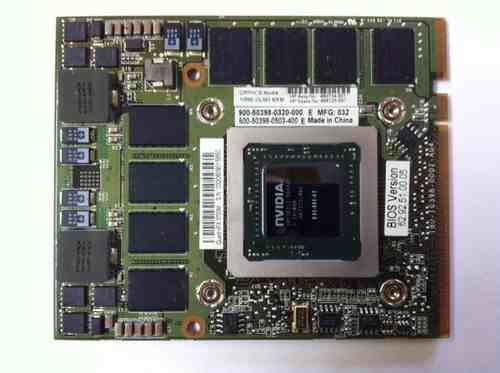I recently built a new machine, primarily because I got fed up of having to stop what I’m working on and reboot from Linux into Windows whenever my friends and/or family invited me to join them in a Borderlands 2 session. Unfortunately, my old machine was just a tiny bit too old (Intel X38 based) to have full, bug-free VT-d/IOMMU support required for VGA passthrough to work, so after 5 years, I finally decided it was time to rectify this. More on this in another article, but the important point I am getting to is that VGA passthrough requires a recent version of Xen. And there this part of the story really begins.
Some of you may have figured out that RHEL derivatives are my Linux distribution of choice (RedSleeve was a big hint). Unfortunately, RedHat have dropped support for Xen Dom0 kernels in EL6, but thankfully, other people have picked up the torch and provide a set of up to date, supported Xen Dom0 kernels and packages for EL6. So far so good. But it was never going to be so simple, at a time when drivers are getting increasingly dumber, feature sparse and more bloated at the same time. That is really what this story is about.
For a start, a few details about the system setup that I am using, and have been using for years.
- I am a KDE, rather than Gnome user. EL6 comes with KDE 4, which use X RandR rather than Xinerama extensions to establish the geometry of the screen layout. This isn’t a problem in itself, but there is no way to override whatever RandR reports, so on a T221 you end up with a regular desktop on half of the T221, and an empty desktop on the other, which looks messy and unnatural.
- This is nothing new – I have covered the issue before in part 1 (ATI, fakexinerama) and part 3 (nvidia, twinview) of this series of articles. There are, however, further complications now:
- EL6 had had a Xorg package update that bumped the ABI version to from 10 to 11
- Nvidia drivers have changed the way TwinView works after version 295.x (TwinView option in xorg.conf is no longer recognized)
- Nvidia drivers 295.x do not support Xorg ABI v11.
- Nvidia kernel drivers 295.x do not build against kernels 3.8.x.
And therein lies the complication.
Nvidia drivers v295 when used with options TwinView and NoTwinViewXineramaInfo also seem to override RandR geometry to the show there is a single, large screen available, rather than two screens. This is exactly what we want when using the T221. Drivers after 295.x (304.x seems to be the next version), don’t recognize the TwinView configuration option, and while they provide Xinerama geometry override when using the NoTwinViewXineramaInfo option, they do not override RandR information any more. This means that you end up with a desktop that looks as you would expect it to if you used two separate monitors (e.g. status bar is only on the first screen, no wallpaper stretch, etc.), rather than a single, seamless desktop.
As you can see, there is a large compound issue in play here. We cannot use the 295.x drivers, because
- They don’t support Xorg ABI 11 – this can be solved by downgrading the xorg-x11-server-* and xorg-x11-drv-* packages to an older version (1.10 from EL 6.3). Easily enough done – just make sure you add xorg-x11-* to your exclude line in /etc/yum.conf after downgrading to avoid accidentally updating them in the future.
- They don’t build against 3.8.x kernels (which is what the Xen kernel I am using is – this is regardless of the long standing semi-allergy of Nvidia binary drivers to Xen). This is more of an issue – but with a bit of manual source editing I was able to solve it.
Here is how to get the latest 295.x driver (295.75) to build against Xen kernel 3.8.6. You may need to do this as root.
Kernel source acquisition and preparation:
wget http://uk1.mirror.crc.id.au/repo/el6/SRPMS/kernel-xen-3.8.6-1.el6xen.src.rpm rpm -ivh kernel-xen-3.8.6-1.el6xen.src.rpm cd ~/rpmbuild/SPEC rpmbuild -bp kernel-xen.spec cd ~/rpmbuild/BUILD/linux-3.8.6 cp /boot/config-3.8.6-1.el6xen.x86_64 .config make prepare make all
Now that you have the kernel sources ready, get the Nvidia driver 295.75, the patch, patch it and build it.
wget http://uk.download.nvidia.com/XFree86/Linux-x86_64/295.75/NVIDIA-Linux-x86_64-295.75.run wget https://dl.dropboxusercontent.com/u/61491808/NVIDIA-Linux-x86_64-295.75.patch bash ./NVIDIA-Linux-x86_64-295.75.run --extract-only patch < NVIDIA-Linux-x86_64-295.75.patch cd NVIDIA-Linux-x86_64-295.75 export IGNORE_XEN_PRESENCE=y export SYSSRC=~/rpmbuild/BUILD/linux-3.8.6 cp /usr/include/linux/version.h $SYSSRC/include/linux/ ./nvidia-installer -s
And there you have it Nvidia driver 295.75 that builds cleanly and works against 3.8.6 kernels. The same xorg.conf given in part 3 of this series will continue to work.
It is really quite disappointing that all this is necessary. What is more concerning is that the ability to use a monitor like the T221 is diminishing by the day. Without the ability to override what RandR returns, it may well be gone completely soon. It seems the only remaining option is to write a fakerandr library (similar to fakexinerama). Any volunteers?
It seems that Nvidia drivers are both losing features and becoming more bloated at the same time. 295.75 is 56MB. 304.88 is 65MB. That is 16% bloat for a driver that is regressively missing a feature, in this case an important one. Can there really be any doubt that the quality of software is deteriorating at an alarming rate?

